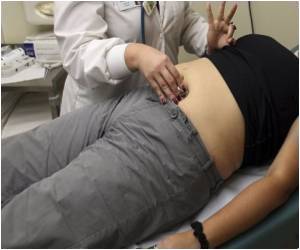Judging fetal heart rate patterns alone may not be sufficient in helping doctors decide whether or not to perform a C- section.

In an attempt to clear up that uncertainty, Dr. Jackson and his colleagues at Intermountain Medical Center studied fetal heart rate patterns from more than 48,000 labor and delivery cases at 10 Intermountain Healthcare hospitals over a 28-month period. The fetal heart rates were then classified using a system developed in 2008 by the Eunice Kennedy Shriver National Institute of Child Health and Human Development and the American College of Obstetricians and Gynecologists.
The results of the study are published in the October issue of the journal Obstetrics and Gynecology.
The system is comprised of three categories: Category I heart rate patterns are considered normal, and, as a rule, do not indicate fetal stress. Category III patterns are abnormal and rare, and usually indicate a problem. Category II patterns are considered indeterminate, and their significance uncertain.
Researchers examined the time babies spent in each of these categories and neonatal outcomes. The fetal heart rate patterns were classified as category I nearly 78% of the time, as category II patterns 22% of the time, and as category III rates only very rarely, 0.004% of the time when data from all stages of labor were analyzed.
But, when looking at the data for just the final two hours of delivery, the numbers changed. The data show that category I rates decreased to 61%, while category II rates increased to 39%, and category III rates increased to 0.006%.
Advertisement
Category II fetal heart rate patterns showed up most often, occurring in 84 percent of all labors. They also found that the amount of time spent in category II increased in the two hours before delivery. This also coincided with lower Apgar scores and increased admissions to the NICU.
Advertisement
Without a good map to guide them during those critical hours, doctors and nurses must play a guessing game – one that will almost always spur them to act with caution – possibly ordering a C-section delivery when it might not be necessary.
"Our next step, obviously, is to sort out those patterns in Category II to determine which ones are more predictive of a baby that's sick and one that's healthy," says Dr. Jackson. "When we know that, we will be able to make better decisions for both the mother and her baby."
Dr. Jackson and his team are currently examining the data on preterm babies during the same period in hopes of uncovering more clues that will help them better decipher category II patterns.
Source-Eurekalert













